A fabled wonder in danger
Great Barrier Reef
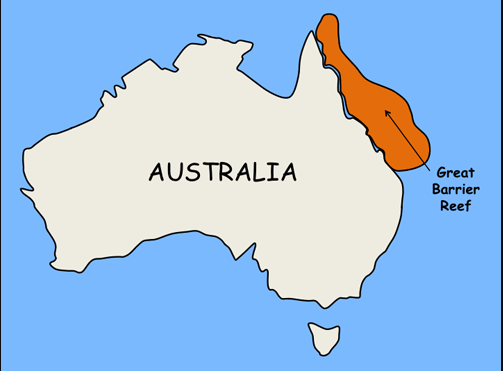
- The Great Barrier Reef is the world’s largest coral reef system composed of over 2,900 individual reefs and 900 islands stretching for over 2,300 kilometres over an area of approximately 3.4 lakh square kilometres.
- It is found in the northeastern coast of Queensland state, Australia.
- It has a geological history going back an estimated 23 million years to the Miocene epoch, and has survived many challenges.
- It has been on UNESCO’s World Heritage Site List since 1981.
| A World Heritage Site is a landmark or area with legal protection by an international convention administered by the United Nations Educational, Scientific and Cultural Organization (UNESCO). World Heritage Sites are designated by UNESCO for having cultural, historical, scientific or other forms of significance. There are two types of Heritage Sites : Natural and Cultural. |
What is Coral?
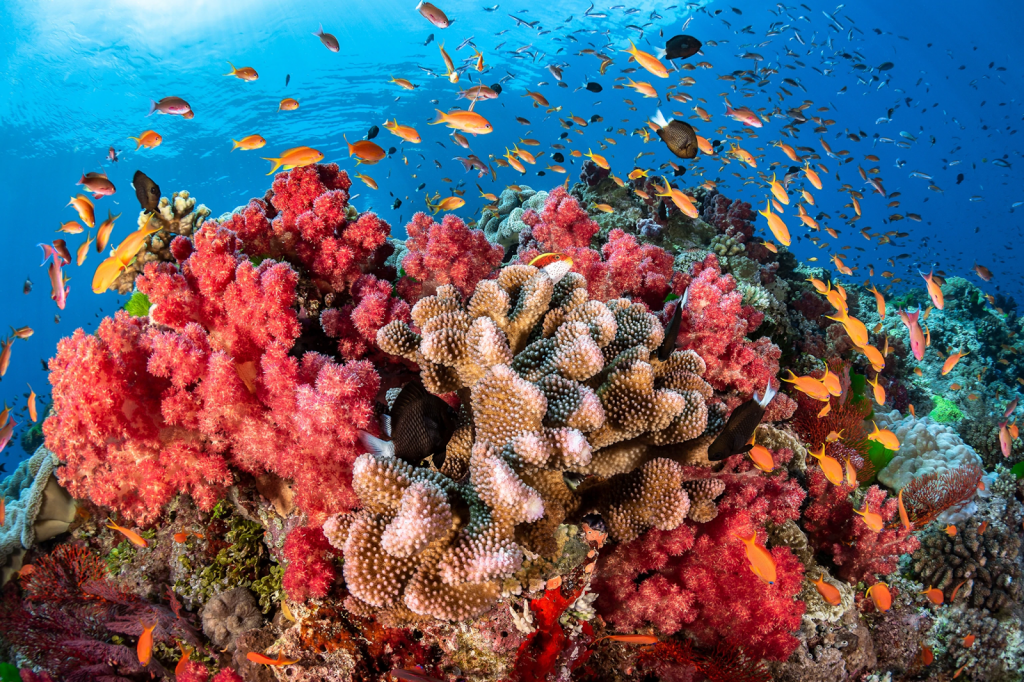
- Coral is a living animal. Coral has a symbiotic relationship with zooxanthellae microscopic algae which live on corals.
- Zooxanthellae assist the coral in nutrient production through its photosynthetic activities .
- These activities provide the corals with fixed carbon compounds for energy, enhance classification, and mediate elemental nutrient flux.
- There are two types of corals: hard corals and soft corals, such as sea fens and gorgonians. Only hard corals build reefs.
- The tissues of corals themselves are actually not the beautiful colors of the coral reefs, but are instead clear (white). The corals receive their coloration from the zooxanthellae living within their tissues.
- Corals occur in shallow tropical areas where the sea water is clean, clear and warm.
- They are also called the “rainforests of the seas”.
Benefits of coral reef ecosystems
- Coral reefs protect coastlines from storms and erosion,
- provide jobs for local communities, and offer opportunities for recreation.
- They also are a source of food and new medicines.
- Over half a billion people depend on reefs for food, income, and protection.
- Fishing, diving, and snorkeling on and near reefs add hundreds of millions of dollars to local businesses.
Coral Bleeching
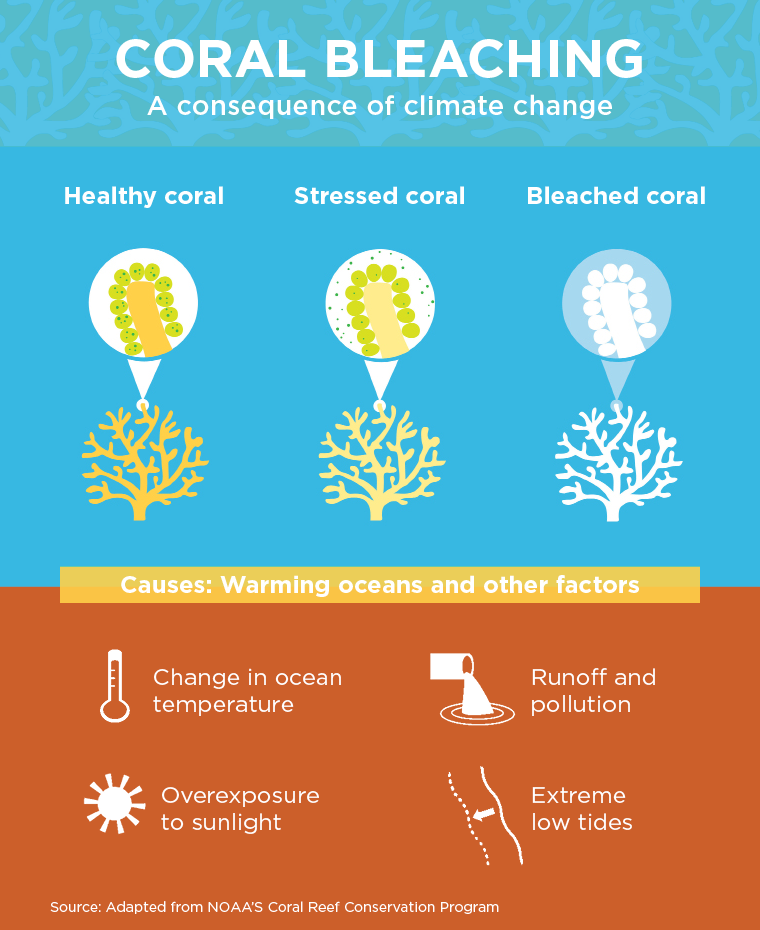
- Coral bleaching happens when corals lose their vibrant colors and turn white. But there’s a lot more to it than that.
- When the ocean environment changes—if it gets too hot, for instance—the coral stresses out and expels the algae. As the algae leaves, the coral fades until it looks like it’s been bleached. If the temperature stays high, the coral won’t let the algae back, and the coral will die.
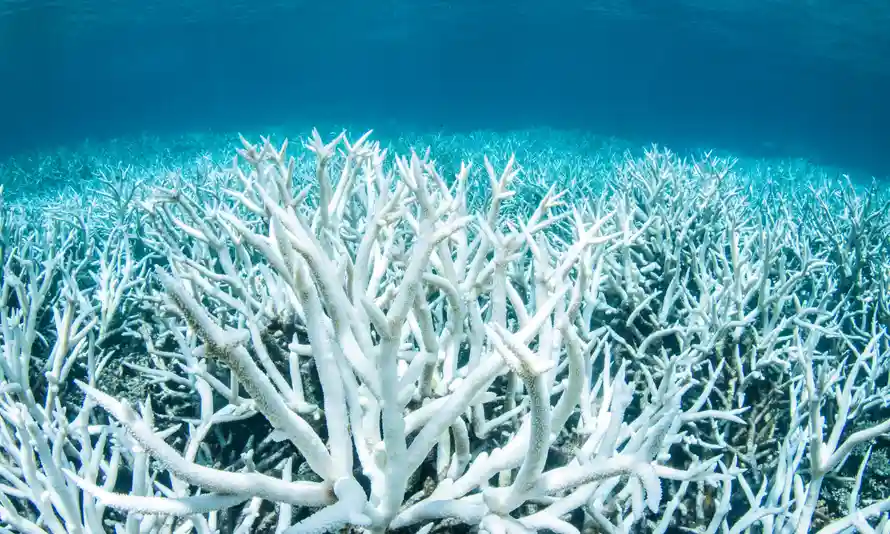
- Coral bleaching matters because once these corals die, reefs rarely come back. With few corals surviving, they struggle to reproduce, and entire reef ecosystems, on which people and wildlife depend, deteriorate.
The crown of thorns starfish
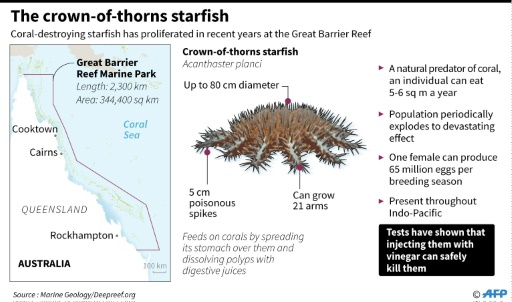
- The crown-of-thorns starfish is a sea star named for the spines that cover its body and arms.
- These spines are somewhat flexible in life and are used for locomotion and for defense from potential predators.
- This species is a well-known coral predator, and outbreaks of tens of thousands of individuals have been known to cause serious harm to coral reefs in some areas.
Why in the news?
- The Great Barrier Reef (GBR) is constantly facing threats and depreciating rapidly.
- The World Heritage Committee has drawn up a resolution to inscribe the reef on the ‘List of World Heritage in Danger‘ based on the 2019 Outlook Report of the Great Barrier Reef Marine Park Authority.
| The List of World Heritage in Danger is designed to inform the international community of conditions which threaten the very characteristics for which a property was inscribed on the World Heritage List, and to encourage corrective action. |
What is causing danger to the GBR?
- At the heart of the crisis is climate change, which has led to three big events of coral bleaching in 2016, 2017 and 2020.
- The Australian continent has recorded a rise in its average temperature by 1.4 degrees C since 1910.
- In 2018, coral larvae declined by 89% averaged across the region, arising from consecutive bleaching events, as the adult broodstock was reduced.
- Warmer temperatures led to feminisation of green turtles originating from nesting beaches in the northern Region, potentially leading to significant scarcity or absence of adult males in the future.
- Coral growth is also endangered by the proliferation of crown-of-thorns starfish, which consumes them.
- Excessive influx of eco-tourists.
What needs to be done?
- Currently an updated Reef 2050 Plan is being pursued for conservation by Australia.
- Further, the government should stop destructive impacts of human activity such as land-based and farm run-off that has polluted waters, coastal development and other commercial uses
Refeernces:
- https://officerspulse.com/wp-content/uploads/bsk-pdf-manager/2020/11/02_11.pdf
- https://officerspulse.com/global-initiative-to-reduce-land-degradation-and-coral-reef-program/
- https://www.constantinealexander.net/2017/05/new-coral-bleaching-database-to-help-predict-fate-of-global-reefs.html
- https://www.worldwildlife.org/pages/everything-you-need-to-know-about-coral-bleaching-and-how-we-can-stop-it
- https://phys.org/news/2017-04-vinegar-barrier-reef-starfish.html
- https://oceana.org/marine-life/corals-and-other-invertebrates/crown-thorns-starfish
- https://epaper.thehindu.com/Home/ShareArticle?OrgId=G1M8N73TE.1&imageview=0
- https://whc.unesco.org/en/158/
- https://en.wikipedia.org/wiki/World_Heritage_Site
Subscribe
Login
0 Comments
